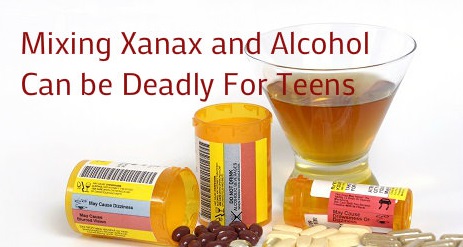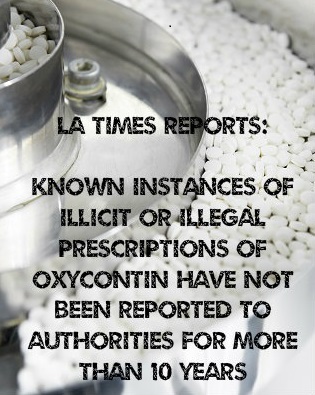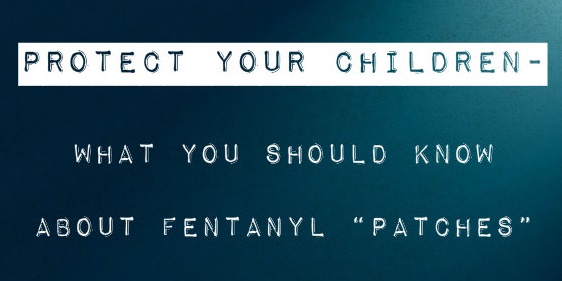Drugs and alcohol extract a heavy toll on those who are close to a person with a substance abuse problem. But they can also cause great difficulties in the workplace, where the reliability and on-the-job performance of addicts will inevitably decline over time. In the American economy, lost productivity related to substance abuse is estimated to add up to hundreds of billions of dollars annually, and, for individual businesses attempting to survive on marginal profits in a sluggish economy, it is especially vital to have employees who can be counted on in a pinch.
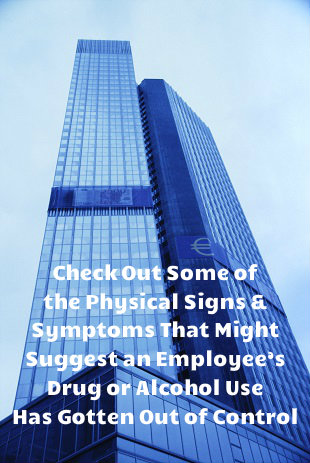 But despite all that is at stake, employers should recognize that addiction is a disease and not simply an irresponsible lifestyle choice, and workers who are suffering from the effects of a substance abuse problem should be treated with compassion and respect as long as they are willing to be open and truthful about what is happening in their lives.
But despite all that is at stake, employers should recognize that addiction is a disease and not simply an irresponsible lifestyle choice, and workers who are suffering from the effects of a substance abuse problem should be treated with compassion and respect as long as they are willing to be open and truthful about what is happening in their lives.
Managers may be able to evaluate the performance of their workers accurately, but it is of course extremely difficult to ascertain why a formerly productive and judicious employee has begun to falter on the job. People often have hidden personal problems or various types of health troubles that can negatively impact their workplace efficiency, either temporarily or permanently, so it is important that bosses and managers tread lightly when they seek to discover the reason a reliable employee has suddenly been giving a less-than-stellar effort or failing to produce results.
Recognizing The Signs
When substance abuse is the problem, there will be indicators that can help clue employers in to what has been going on. It may take a sharp eye to spot them, but they will be present.
Some of the physical signs or symptoms that might suggest an employee’s drug or alcohol use has gotten out of control could include:
- Bloodshot eyes
- Nosebleeds
- Unexplained weight loss and loss of appetite
- Dental problems
- Slovenly or unprofessional appearance
- The presence of unusual odors on or around the employee
- Slurred speech
- Sleeping on the job
- Shaking or tremors
- Seizures
In addition to these tell-tale physical symptoms, the behavior of addicts or alcoholics will likely change in noticeable ways as well. Some behaviors to look out for would include:
- Frequent tardiness
- Mood swings, fits of irrational anger, or sudden bouts of hyperactivity
- Secretiveness
- Sloppiness in carrying out routine assignments
- Refusal to spend time with co-workers during lunch hours or in off-hours (when this activity had been normal before)
- Loss of interest in favorite hobbies or activities
- Actions or choices that lead to injuries or accidents on or off the job, with hazy explanations about what took place and exactly why it happened
Above all else, when the issue is substance abuse, employers and co-workers should learn to trust their instincts. Because substance abuse is so common, most of us have likely encountered it in our families or among friends at some point in our lives, and consequently we are usually capable of recognizing the signs of substance abuse.
The Value Of Preparation
It is always better to anticipate trouble before it arrives so you will be prepared to handle it if and when it comes. This is certainly true when the subject is substance abuse in the workplace, and that is why all employers should have clearly established policies that dictate how addiction and problem drinking or drug abuse will be handled. These policies should be fully disclosed and explained succinctly in written form, in a document or handbook that will be considered required reading for all employees. And just to make sure there is no confusion or uncertainly, employees should be required to a sign a form indicating that they understand the company’s substance abuse policies and will accept any and all consequences of their actions.
But while employers have some leeway in this area, they cannot dictate automatic dismissal if a substance abuse problem is proven to exist. Federal and state disability laws protect the rights of workers with drug or alcohol addictions if they are willing to seek treatment for their dependency, and it is incumbent upon a business owner or manager to speak with a company attorney before instituting substance abuse policies to make sure everything is strictly legal and in synch with existing civil rights statutes.
Employers must be ready, willing, and able to help their workers get the assistance they need should substance abuse become an issue. To make sure they are prepared to do so, businesses should have insurance policies that will cover the costs of drug/alcohol treatment and rehabilitation for workers should they ever be required. Of course managers themselves could someday encounter substance abuse problems, which means that it is really in everyone’s best interests to have adequate health insurance to cover this contingency. And just so they are sure what is out there, employers should fully research drug and alcohol treatment options available in their communities, so that if and when employees need this information it will be available and accessible.
Asking The Right Questions, Getting The Right Answers
When substance abuse is suspected, an employer should approach his or her employee in a way that is open and honest but not confrontational. This is the best way to get answers, and it is the most compassionate path to take when the issue is a disease like addiction. Nevertheless, managers and bosses have a need and a right to discover the truth from their employees about what is happening when workplace performance is suffering, and if an employer cannot get a straightforward response from a worker who is failing to do his job correctly, termination will be a legally permitted option.
But the ultimate goal of any workplace intervention should be to help the person in question get the help he or she needs. With hard work, determination, and a relentlessly positive attitude, addiction can be overcome, and it is in the best interest of every employer to offer whatever assistance they can to men and women whose lives have been momentarily sidetracked by drug or alcohol dependency.
To Read About the Drugs Students are Taking to Boost Grades – Click Here
10 Sep 2013
Huffing: A Dangerous Trend For Teens
Alcohol, street drugs, prescription drugs and over-the-counter medications are not the only way kids are getting high and it is imperative that parents become aware. Teens are “huffing” all sorts of common household items in order to get a fast buzz.
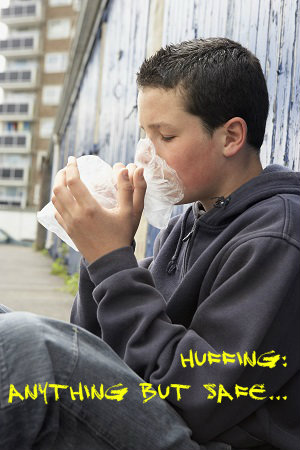 Teens and preteens looking for a cheap high are willing to experiment with breathing in powerful household products like nail polish remover, hair spray, aerosol deodorants, computer cleaner, correction fluid and even aerosol from whip cream canisters. These and other toxic substances are found in nearly every room in American homes. The problem is that many parents, like their young teens, fail to recognize the dangers. A single attempt at huffing has been enough to kill some youth.
Teens and preteens looking for a cheap high are willing to experiment with breathing in powerful household products like nail polish remover, hair spray, aerosol deodorants, computer cleaner, correction fluid and even aerosol from whip cream canisters. These and other toxic substances are found in nearly every room in American homes. The problem is that many parents, like their young teens, fail to recognize the dangers. A single attempt at huffing has been enough to kill some youth.
Huffing is also called dusting or sniffing. Kids trap the toxic chemicals in a small plastic bag which they then hold up to their face before inhaling deeply. This gives them a five to 10 second rush or high. Teens inhale magic markers, household paint, Freon from air-conditioners and refill cartridges for butane lighters.
Dangerously False “Safer” Perception
In recent years there has been a trend among teens away from illegal street drugs towards substances that teens consider more ‘safe.’ Prescription and over-the-counter medications became more widely used for a time until cost and safety measures made them hard to come by. Now inhalants are popular. Not only do these products seem harmless to teens, they are also inexpensive and easy to obtain. Most of the time teens can simply help themselves to something already on the shelf at home. If not, no one will question them when they buy these things at the store.
The truth is that these products are safe when used for their intended purposes and according to their package directions. They are anything but safe when inhaled in order to get high. At best, repeated exposure will injure vital organs (kidneys, liver, lungs, heart and brain). At worst, kids can experience heart attack – referred to as Sudden Sniffing Death Syndrome – or suffocation. Parents who had no idea their child was huffing have gone into their child’s room to find them dead on the floor with a bottle of computer cleaner still clenched in their fingers.
Parents should talk with their teens and even preteens about the dangers of breathing in toxic fumes and chemicals. Kids are huffing even in elementary school, so it isn’t a discussion that needs to wait for high school – it can happen while using these household items or it can be part of a sit-down conversation about drug use in general. Tell your kids that while a product can be safe to use it can still be poisonous. Poison is an important adjective since it communicates just how serious these substances really are.
Parents Can Also Keep Their Eyes Open To Signs Of Huffing, Including:
- Finding plastic bags with a chemical odor to them
- Aerosol products or strong chemical items disappearing entirely or running out quickly
- Teens having the smell of chemicals on their breath
- Symptoms of intoxication, such as red and watery eyes, slurred speech or dazed appearances
- Paint, correction fluid or magic marker stains on their face
- Household products being out of place or perhaps even in the teen’s room.
The best defense is a strong offense, so talk with kids about what their friends might be doing. Talk about why kids might be looking to get high. If your child is huffing regularly, get professional help. Huffing can be addictive in the same way as drugs or alcohol, and kids won’t know which sniff could be their last.
05 Sep 2013
Mixing Xanax and Alcohol Can be Deadly For Teens
If you look up the number one prescribed medication in the United States you will find Xanax at the very top of the list. The anti-anxiety medication is so widely prescribed these days that it can be found in a shockingly high number of American households. Used to treat anxiety and panic disorders, the drug is also commonly prescribed for patients complaining of high stress. Despite the fact that Xanax has recently been implicated in some high profile overdose deaths, the drug continues to enjoy widespread popularity.
Xanax is part of a family of drugs known as diazepines. Its chemical designation is Alprazolam and in 2009, 44 million prescriptions for the drug were written. By 2011 diazepine prescriptions were numbering above 260 million, of which Xanax represents the lion’s share.
Dangerous Quick High
Unfortunately the drug is not only popular with patients and their doctors but with young adults and teens looking for a quick drug-induced escape from reality. Teens like Xanax because it is so accessible – just grab one out of mom or dad’s medicine cabinet, right? – but also because the drug offers such a quick “high.” Within just 10 or 15 minutes users can feel an extreme high or low sensation. Users also experience accentuated symptoms of sedation like slurred speech, droopy eyes and other kinds of psychomotor retardation. Essentially, the person feels like they are drunk on alcohol.
Xanax provides a quick high because it is metabolized quickly, but the high ends just as fast as it comes on. The problem is that the drug also induces a state of memory impairment that is akin to blacking out. This creates a high risk situation since the person senses the absence of the sought after feelings but cannot remember that they recently took a pill, leaving them quite likely to pop another one. Taking even two Xanax in a short amount of time can have serious consequences.
Unfortunately, many who abuse Xanax also abuse alcohol. This means that users are taking two depressants at the same time. It is just like doubling up on Xanax in terms of risk. Drinking along with taking a Xanax may double the high, but it also ratchets up the risk factor – ingesting two strong depressants can slow down respiration (breathing) and the central nervous system to hazardously low levels.
Symptoms of Use
Symptoms of Xanax use include slowed heartbeat, trouble concentrating, slowed breathing, sleepiness, confusion and loss of memory. According to reports from the Substance Abuse and Mental Health Services Administration more than 60,000 hospital admissions were the result of Xanax abuse in 2008. Since prescription rates for the drug have steadily climbed by 9 percent annually, current figures can be expected to vastly outstrip that number.
Benzodiazepines like Xanax are medically appropriate when used to help epileptics prevent serious seizures. The drug is sometimes prescribed to treat insomnia but warnings abound recommending that the drug only be used short-term for treating sleeplessness. It is probably most commonly prescribed to calm symptoms of generalized anxiety disorder, but again the drug is recommended only for short-term use, not more than one month.
Xanax works by increasing activity of the brain’s own soothing mechanism. Neurotransmitters known as GABA are naturally occurring sedatives. When these neurotransmitters are abnormally excited long-term a physical and psychological dependence (addiction) can result.
What this means is that it is not hard at all for people using Xanax to quickly feel like they need the drug in order to cope. Tolerance is a term which describes how the body adjusts to the presence of medications and eventually requires more of a substance in order to produce similar results. Teens who take Xanax can wind up addicted to the drug before they know it.
If a teen is mixing Xanax – or any medication recreationally – with alcohol, the potential for addiction skyrockets, as does the risk of lethal consequences.
OxyContin is the brand name for a specific form of oxycodone, an opioid narcotic medication known for its potential to trigger problems with drug abuse or drug addiction. Because of the medication’s association with increased abuse and addiction risks, sale of all forms of oxycodone are strictly controlled under federal guidelines. However, according to a new investigative report by the Los Angeles Times, the manufacturer of OxyContin—a company called Purdue Pharma—has failed to report known instances of illicit or illegal prescriptions of the medication to authorities for more than 10 years.
After the report in The Times, two state senators in California have called on the maker of OxyContin to turn over the names of California physicians it suspects recklessly prescribed its pills to drug dealers and addicts.
Oxycodone Basics
Oxycodone is a synthetic substance made in pharmaceutical laboratories from a specific chemical found naturally in a plant called the opium poppy. When it interacts with nerve cells in the body’s central nervous system (brain and spinal cord), it reduces the body’s ability to feel pain. The U.S. National Library of Medicine lists available forms of oxycodone that include liquids, concentrates, capsules and tablets. While some oxycodone-containing products are sold without additional active ingredients, other products also contain acetaminophen, aspirin or ibuprofen. In addition to OxyContin, oxycodone-based medications include Percocet, Percodan and Endocet.
The same mechanisms that give oxycodone the ability to ease pain also give it the ability to alter normal function in the part of the brain that regulates pleasurable sensations. It is the intensity of the drug’s effects on the brain’s pleasure centers that accounts for its association with profound risks for abuse and addiction. Because of the potential for misuse of oxycodone, federal regulators have placed it on a list of officially controlled substances called Schedule II drugs. All substances on this list have clear usefulness as therapeutic medications, but also present enough risks to warrant strong restrictions on their use.
OxyContin Basics
OxyContin comes in tablet form and was originally marketed as a safer, long-acting alternative to morphine, another opioid narcotic capable of reducing moderate or severe forms of pain. When the medication hit the market, its safe use was significantly undermined by its easy crushability. This crushability encouraged abusers to rapidly introduce OxyContin into their bloodstreams through IV injection or inhalation. In an effort to correct a widespread pattern of misuse, Purdue Pharma introduced a non-crushable form of the medication in 2009. Following the release of this new product, misuse of OxyContin dropped by almost 200 percent. However, significant numbers of people across the U.S. still use the medication illicitly or illegally.
New Findings
In 2002, Purdue Pharma started tracking doctors across the U.S. suspected of knowingly prescribing OxyContin to people addicted to oxycodone or other narcotic or non-narcotic medications, as well as doctors suspected of selling their OxyContin supplies to drug dealers. As of 2013, the company had identified more than 1,800 physicians believed to be participating in these activities. However, Purdue Pharma has never made a concerted effort to release their list of suspects to any federal, state or local law enforcement agency, or to a medical body responsible for disciplining doctor misconduct. In fact, the company has sometimes made efforts to deflect attention away from purposeful, improper OxyContin prescribing by publicly linking the illegal availability of the medication to such things as robberies, theft of OxyContin by family members of legitimate users, and patients’ efforts to obtain the medication from multiple doctors.
Purdue Pharma only openly revealed the existence of its internal list of misprescribing physicians in June 2013. Because of the immense profitability of OxyContin, some investigators and public health officials have openly questioned the company’s motivations for not revealing its knowledge on the issue at any point in the last 10 years. Spokesmen for Purdue Pharma counter these criticisms by asserting that, while they have never released the names of all suspected doctors, they have separately given medical groups and law enforcement officials the names of 154 of the 1,800 physicians in their database. However, since no one outside the company has seen the full list of suspected misprescribers, there is no way to independently gauge the accuracy of these statements.
Considerations
Some of the doctors under investigation for illegally prescribing or selling OxyContin have been involved in widespread distribution efforts that meet federal and state standards for drug dealing. For instance, one California physician was recently convicted of illegally selling over 1 million doses of the medication. Another doctor prescribed millions of dollars worth of OxyContin and other opioid narcotics to people known to have problems with drug addiction. Officials from Purdue Pharma state that they have no legal obligation to assist law enforcement or medical regulators in their efforts to control OxyContin’s availability.
03 Sep 2013
Fentanyl “Patches” – Deadly For Children
A 12-year-old girl from Clinton, Missouri was found dead in June 2013 after a suspected overdose of the Fentanyl patch. Destiny Spilter died after she stuck a used fentanyl patch on her thigh. The patch had been previously worn by her grandmother who, once done with it, threw it in the trash.
Fentanyl is an extremely strong opioid used to manage pain. It is 100 times more potent than morphine and 40 times stronger than heroin. Overdoses, some even fatal, are common.
Many patients are prescribed Fentanyl when other types of narcotic pain medications no longer offer relief. In most cases, this is because the body has developed tolerance to the pain killer, and it needs more and more of the substance to offer the same type of relief. Since many medications are lethal at such high doses, doctors must look to a different medication altogether instead of just increasing the dose of the current prescription. Fentanyl is a favored tool in the pain-management arsenal.
Use with Extreme Caution
Despite its benefits, however, Fentanyl must be used with extreme caution as even patients who have topped out of their traditional pain medications have found it to be too strong to tolerate. The patch, even at its lowest dose, has the potential to reduce respiration to the point of death.
The Fentanyl patch was created to offer continuous relief to patients in chronic pain, but over a period of several days. If a person were to ingest that amount of Fentanyl all at once, it would likely be fatal. Given its high potency, there are a number of safety advisories and side effect warnings regarding use of the drug. One of the FDA warnings recommends flushing the patch after use so that unintended recipients do not ingest the remaining residue — either accidentally or on purpose. Even though the Agency recognized that there may be some environmental concerns about flushing, it felt that the risk associated with accidental exposure far outweighed any potential risk to the environment or water sources.
Tragedy – Too Often
Destiny’s grandmother, who was using the patch to manage her chronic back pain, did not follow these fairly simple instructions. Not surprisingly, the curious young girl found the patch and put it on, perhaps mimicking the behavior she previously observed in her grandmother. Even after the patch is used for three days, studies show that it could still contain more than 50 percent of the original Fentanyl dose. Her body was unable to handle even the amount of Fentanyl that remained in the patch and she died.
Unfortunately, accidental overdose is not uncommon for the Fentanyl patch — especially in children. Children may be initially attracted to the patch, thinking that it is a sticker. And because the patch is meant to stay on the skin for up to 3 days, there is typically plenty of glue remaining to keep it securely on the child’s skin. If they place it in an area that is hidden by clothing, caretakers may not notice it until the damage has been done.
02 Sep 2013
Taking Drugs to Boost Grades
For some, college was a time for sleeping in and goofing off. For others, memories of college are associated with stress as students worked to achieve good grades while juggling intense academic requirements, extracurricular activities and relationships with a new level of personal responsibility.
The stakes are high. Students understand that their grades will help them secure a good job with financial security. Competition can be fierce to not only be accepted into but also remain in specialty colleges within the university that teach skills to teachers, therapists, accountants and engineers.
 “Smart Drugs” Not so Smart
“Smart Drugs” Not so Smart
Recently, ABC affiliate 13WHAM of Rochester, New York, highlighted one way that students choose to handle the pressure – misusing prescription stimulants to increase focus and eliminate the need for sleep, known as “smart drugs.”
Adderall is just one brand name drug that students abuse as a study aid. Prescribed to treat attention deficit hyperactivity disorder (ADHD), the drug is so widely issued by doctors that students find it relatively easy to obtain as friends may be willing to sell their extra pills.
A study published in The Addiction Journal indicated that the problem is becoming widespread. One in four college students indicate they have used pills to get through an exam or other stressful academic situation.
The 13WHAM story profiles an individual under the pseudonym of Steve who regularly uses stimulants to meet academic requirements. He said the medication increases focus and avoid sleeping, allowing for a 72-hour straight study session he did when taking 60 milligrams of Adderall, which paid off with good grades.
Adderall Abuse & Risks
Adderall abuse is becoming more common and the effects of the drug can lead to increased medical interventions and the need for emergency care.
Students are unaware of or underestimate the risks associated with the misuse of prescription drugs. They may believe that prescription drugs are somehow safer than street drugs or that there isn’t a risk of mixing drugs with other medications. Experts, on the other hand, warn that the drugs can be extremely dangerous, with adverse reactions including stroke, heart attack and psychotic episodes.
13WHAM reported that university health center doctors were seeing increased attempts by students to get prescriptions for stimulants as finals approached. The physicians said that while they are generally able to help students who have a diagnosis for ADHD, it takes more than one exam session to determine whether a student is abusing stimulants.
What Parents Can Do
Parents should take time to talk to their college-age children about the risks of using stimulants. They can also speak openly about their opinions and rules related to substance use. While students enjoy an increased level of freedom at college, many are still receptive to their parents’ viewpoint while they are receiving support, both financial and otherwise.
While parents may doubt their influence, particularly after their teen has left home to pursue a degree, studies show that parents play an important role. Teens who abstain from substance use repeatedly indicate that their parents were influential in helping them decide not to use substances.
Parents can also be a source of support for their college-age child as they face the intense pressure and competition to succeed in school. Keeping an open conversation about the challenges and expectations involved with getting a degree may help a student avoid making poor decisions related to stress management.
Britain’s Daily Mail recently ran an article from the mother of a 12-year-old who told how her daughter’s friends are experimenting with marijuana and being expelled from school. Once confined to older teens and young adults, smoking marijuana is now more common among teens and pre-teens.

From states in the U.S. deciding to legalize marijuana to movie stars and rock stars being photographed using it, the message sounding loud and clear to youngsters is that smoking marijuana has no repercussions. The Daily Mail article recounted the stories of several pre-teens who had been either expelled from their private schools or who were using the drug off-campus to avoid expulsion. The obvious point was that young children were getting their hands on marijuana and seemed to have no worries about the consequences.
The British newspaper article did not hesitate to point fingers at singers like Lil Wayne and the late Amy Winehouse among others – stars who make no bones about using marijuana. Public icons, especially music icons, are influential for young teens and pre-teens. Their cavalier attitude and, in some cases, promotion of marijuana use, has more impact than many parents might like.
At Risk
The article also reported on studies in the Commonwealth that have found that when a teen uses marijuana s/he becomes more at risk than alcoholics for developing mental illness. Teens who use pot also tend to have more problems with relationships and have a tougher time finding steady employment. These facts are lost on the pre-teen and early teenager who only knows that they want to be like the superstars they see on TV and splashed across online tabloids.
In Great Britain, one out of every eight arrests for dealing marijuana involves a child. Kids are smoking it. Kids are selling it. Kids don’t think marijuana is anything to stay away from. The facts, of course, are far different but evidently we aren’t getting the message through. There is too much confusion between what is being portrayed and what is being said.
The truth is that early marijuana use can increase the likelihood of later addictions. Teens who use marijuana run a greater risk of depression. One out of every 10 marijuana users will experience severe effects such as anxiety, paranoia and hallucinations. No one can say who will be in the 10 percent.
One of the researchers in Australia who investigated the outcomes for teens who decide to smoke marijuana said use of cannabis can negatively affect teens for years.
You would be forgiven for thinking that the prescription drug epidemic affects only the users themselves. Abusing medicines such as Vicodin and OxyContin—opiate drugs with chemical similarities to heroin—puts the users at significant risk, killing more Americans than heroin and cocaine combined in 2008; but using when you’re pregnant presents a whole new class of risks. Babies of opiate-using mothers can be born in withdrawal, their systems shocked by the abrupt withdrawal of substances, and research has revealed that this is happening more and more frequently in the United States. In fact, three times as many babies were born with neonatal abstinence syndrome (NAS) in 2009 than in 2000, reflecting the rapid rise in the prescription drug problem.
The Study
Lead researcher Dr. Stephen Patrick had noticed an increase in the number of babies with NAS at CS Mott Children’s Hospital at the University of Michigan, and set out to determine whether the numbers were also increasing across the country. The researchers looked at discharge records from 2000, 2003, 2006 and 2009 from a database of patients that covers 44 states and over 4,100 hospitals. When the researchers determined which of the births were associated with opiate use, they revealed some shocking statistics about the extent of the problem.
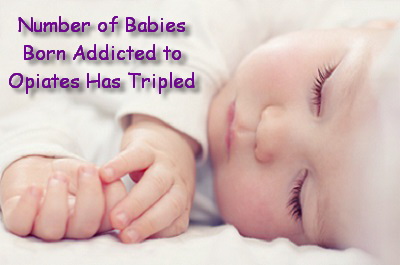
They found that the number of pregnant women abusing opiate medicines when the baby was being delivered was five times higher in 2009 than in 2000. In addition, the researchers found that the rates of illicit drug use during pregnancy were 16.2 percent of teens and 7.4 percent of adults. Generally speaking—and somewhat obviously—any drug use during pregnancy poses some risk to the infant since they’re getting small doses of anything the mother takes.
As you might expect with the increase in numbers of opiate-using mothers, the number of babies born with NAS has also increased significantly. The rate almost tripled over the experimental period, from 1.20 per 1,000 births up to 3.39 in 2009. This has a disturbing parallel with the numbers of overdose deaths from prescription painkillers since the 1990s, which has also increased three-fold. The problem can’t exist in a vacuum—related issues, like babies born with NAS, are bound to increase as well.
What Is NAS?
NAS is a condition that occurs when the baby becomes addicted to drugs along with the mother when it’s in the womb. It isn’t just opiate drugs that can lead to it: marijuana, benzodiazepines, cocaine, amphetamines and the use other substances can also result in NAS. The symptoms include excessive or high-pitched crying, fever, irritability, tremors, sweating, sleep problems and sneezing or a stuffy nose.
The researchers also found that the babies born with NAS were over three times more likely to have respiratory problems and over twice as likely to have a low birth weight. Interestingly, they were also notably more likely to be covered by Medicaid, meaning that the issues were more common in low-income families.
Better Treatment or Prevention?
The researchers also looked at the average length of stay for the newborns with NAS, which they noted hasn’t decreased over the last decade. From their perspective, this represents an area in need of improvement for physicians. Since state Medicaid programs bear much of the brunt of the problem, there is a lot of motivation to improve care for opiate-addicted pregnant women. The researchers argue that since there are no standardized clinical guidelines for treatment of NAS, it is possible to improve care for the babies themselves, possibly using a combination of an opiate and another medicine such as clonidine, but breastfeeding can also help.
The other suggestion is to enroll opiate-addicted mothers in methadone programs or provide them with drugs such as buprenorphine, which is often used in cases of opiate addiction. If these interventions were successful, the numbers of babies born with NAS would decrease, rather than just the amount of time they have to spend in treatment as a result of it.
Clearly, prevention of NAS is a considerably better solution than merely determining a better way to treat babies suffering from it, but the problem impacts much more than pregnant women. The rates of prescription painkiller abuse across the U.S. are on the rise, so this research serves as yet another reason to address that problem.


